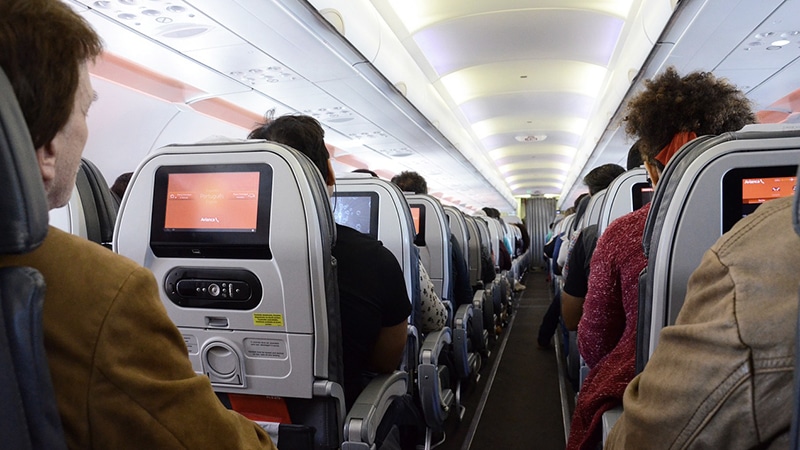Having surgery can be traumatic, but once it’s over with you’ll want to get back into your normal routine as quickly as possible – so when might it be safe to fly?
Here’s our at-a-glance guide based on Civil Aviation Authority (CAA) guidelines and advice from the NHS. Remember, always check with your medical professional before flying after surgery.

Having surgery doesn’t mean you won’t be able to fly
The time between having surgery and when it’s safe to fly will depend on the complexity and extent of the operation carried out.
The following is a CAA rough guide to when it’s okay to fly after various types of surgery.
Rough guide to flying after surgery…
Here we look at some common surgical procedures and how they might impact on your travel plans. Make sure you contact your medical professional before booking tickets.
Minor surgery and keyhole procedures:
General guidelines suggest it’s sensible to leave one to two days following keyhole surgery and four to five days for simple abdominal surgery.
Colonoscopy:
You are likely to be able to travel one day after the procedure.
Major chest or abdominal surgery:
Serious chest or abdominal invasions – such as coronary artery bypass graft – will require the patient to wait at least 10 days before boarding a flight.
Simple cataract or corneal laser surgery:
These types of procedures rarely cause complications, making it likely that air travel can commence after 24 hours.
Complex eye surgery:
Procedures such as those undertaken for the likes of a detached retina require at least a week before resuming air travel. If a gas bubble is used, this could extend the no-fly time to around two to six weeks.
Surgery where a plaster cast was applied:
Having this type of surgery will require you wait one to two days before flying. The cast is likely to restrict mobility, so you won’t be allowed to book some extra-legroom seats located near exits.
Tips for flying after surgery
Follow these suggestions to help ensure a trouble-free and comfortable flight following surgery.
1) Get mobile: Make sure you are as mobile as possible before the flight. Moving around can help prevent the formation of clots.
2) Take aspirin if advised to do so by a doctor. This will help prevent the formation of clots during the flight. You may also be prescribed a stronger anticoagulant – such as Warfarin – depending on the type of surgery you’ve had. Do not self-prescribe these types of drugs.
3) Stay hydrated but avoid too much caffeine and alcohol. These can increase dehydration and hinder the effectiveness of drugs used to thin blood and prevent clots.
4) Try to take regular exercise during the flight; walking up and down the aisle, visiting the loo and simply waggling your feet will help promote blood circulation help to prevent thrombosis.
5) Compression socks won’t win any fashion prizes, but they might well help prevent the likes of deep vein thrombosis.
6) Pick a seat with extra legroom, see below, but don’t book seats in exit rows – these are reserved for able-bodied passengers who could help others in the event of an emergency.
7) Don’t forget to pack painkillers and other medicines you require in your hand luggage. This will make them accessible during the flight and cut the risk of being left without vital medicine if your hold luggage has different travel plans to you.
8) Booking an early morning flight can be helpful if you’re feeling a little queasy after surgery. Morning air is often calmer than later in the day – meaning a smoother flight is more likely – if not guaranteed.
9) Sit near, or over a wing – this is another tactic to help ensure a smoother flight, as these areas move around less. This will help with nausea and any tender post-surgery body parts.
10) With financial pressure to keep planes flying throughout the day, thousands of passengers can travel throughout each 24-hour period – with deep cleaning only taking place at the start of each day. This can put passengers who’ve had surgery at heightened risk of infection. Use our extensive on-board hygiene guide to help keep the bugs at bay.
What to do next
If you’ve recently had any form of surgery, you should contact your airline’s medical adviser to make sure you’re okay to fly.
Book meet and greet parking: Cutting the amount of walking with heavy luggage will be welcome after most surgery, so booking meet and greet airport parking makes a smart option. Simply drive to the airport terminal – or nearby drop-off zone – where you’ll be met by a chauffeur who’ll park your car while you head straight to the check-in desk.
Get a quote for meet and greet parking
Book extra-legroom seats: Additionally, passengers recovering from surgery can have a much more enjoyable and comfortable flight by booking an extra-legroom seat. Avoid exit-row seats – as these are reserved for the able-bodied – but you can still pre-book many other premium seats for just a few pounds extra.
Check out our airline-by-airline guide to extra legroom seats here.

I have had bypass surgery on July 18
I want to fly on Oct 15 is that possible
Yes, it is possible for you to fly on October 15th, 2023, if you had a bypass surgery on July 18, 2023. The UK Civil Aviation Authority (CAA) recommends waiting 10 to 14 days after chest surgery or a coronary artery bypass graft (CABG) before flying. However, it is always best to check with your doctor before flying, as they can assess your circumstances and give you the best advice. https://www.nhs.uk/common-health-questions/accidents-first-aid-and-treatments/when-can-i-fly-after-surgery/
Hi I am having stem cell treatment to ankle a week before I fly would it be safe for me